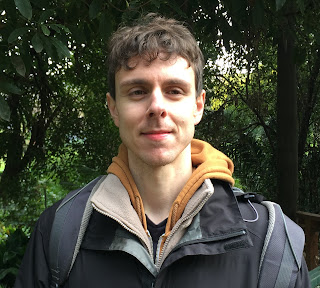John Zerilli was a Research Fellow at the Leverhulme Centre for the Future of Intelligence in the University of Cambridge, and is now a Leverhulme Trust Fellow at the University of Oxford. He co-authored A Citizen's Guide to Artificial Intelligence.
Why AI?
In a way, I fell into the field. My PhD was in cognitive science and philosophy, so I’d been familiar with some of the history of AI, and always understood these disciplines as complementary. (It’s sometimes said that cognitive science takes the mind to be a kind of computer, while AI takes the computer to be a kind of mind.) But I originally trained as a lawyer, and it just so happened that when I entered the academic job market in my mid-thirties, deep learning was getting lots of attention, including among legal scholars, social scientists and others concerned with the wider implications of advanced machine learning and big data. Almost overnight, postdoctoral fellowships began appearing for which suitable applicants had to demonstrate a background in either computer science, machine learning, cognitive science or data science, on the one hand, and public policy, law, philosophy or bioethics on the other. I seemed to fit the bill. A postdoc opened up in New Zealand (I was in Australia). I applied and was offered the job. From there I took up a fellowship at Cambridge, and now find myself in Oxford.
Why this book?
It became clear to me that while there’d been no shortage of books on specific social issues in AI, like discrimination and privacy, many of them excellent (Cathy O’Neil’s Weapons of Math Destruction, Shoshana Zuboff’s Surveillance Capitalism, and Virginia Eubank’s Automating Inequality all spring to mind), there was no all-round user-friendly guide to all the big issues: privacy and bias for sure, but also transparency, control, accuracy, safety, liability, employment, and regulation. Some of the earlier books also had the feel of investigative and even literary journalism. This style makes for an interesting read, but it doesn’t always make for the sort of precise, targeted, issue-by-issue dissection likely to be of use to people who just want to get up to speed quickly.
Beyond that, my co-authors and I were keen for people to get a better grip on the technology than most trade books allow for. There’s definitely something to be said for keeping technicalities to a minimum. But big tech is about tech, and we thought citizens deserve more than a superficial acquaintance with it. Hence the idea for A Citizen’s Guide to Artificial Intelligence was born.
What’s next?
I love the field I work in, and that it draws so extensively on my philosophical, legal and cognitive science backgrounds. I’d like to contribute further to making AI a mainstream concern in moral and political philosophy. Developments in AI are posing questions that traditional philosophical answers in these areas aren’t always adequate to resolve.
What’s exciting you at the moment?
I’m particularly excited at the prospect of machine learning assisting our best scientists in the discovery of new medicines tackling everything from cancer to mental illness—and, of course, in tackling global warming.


Comments
Post a Comment